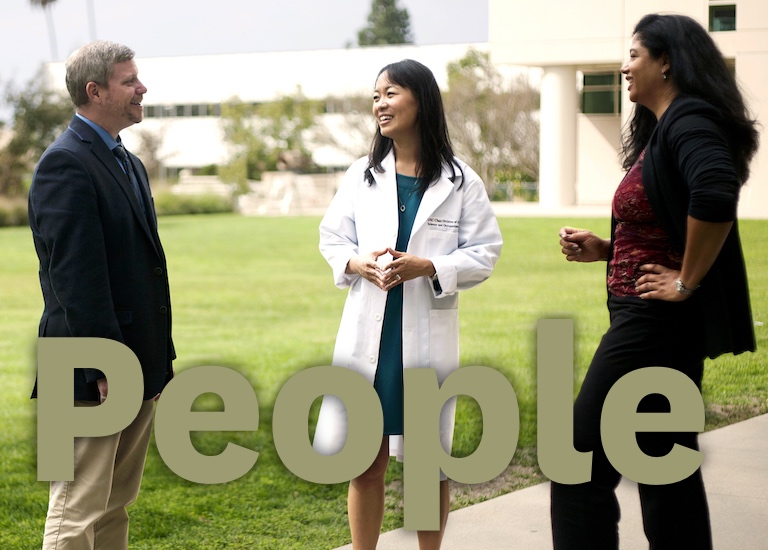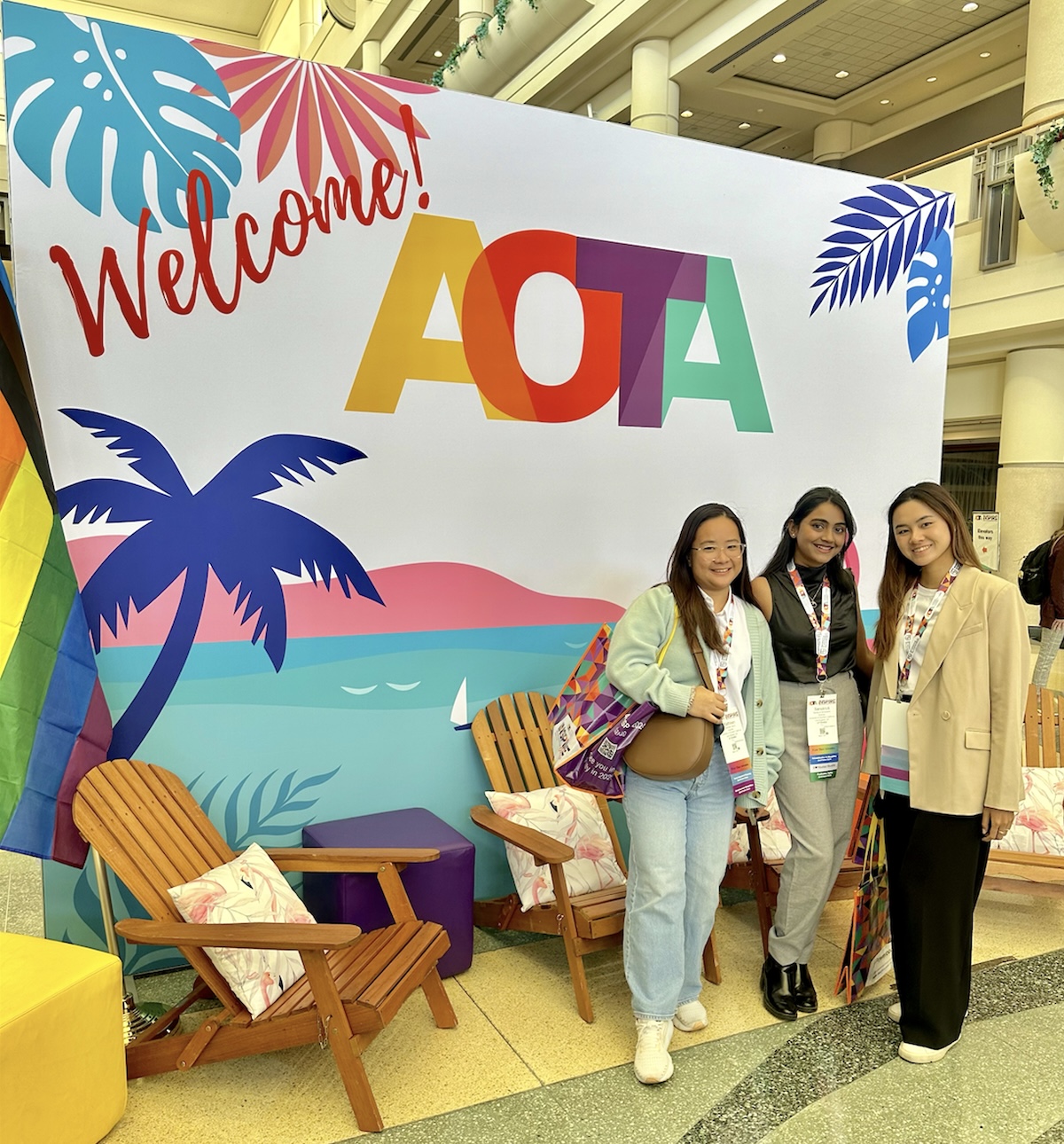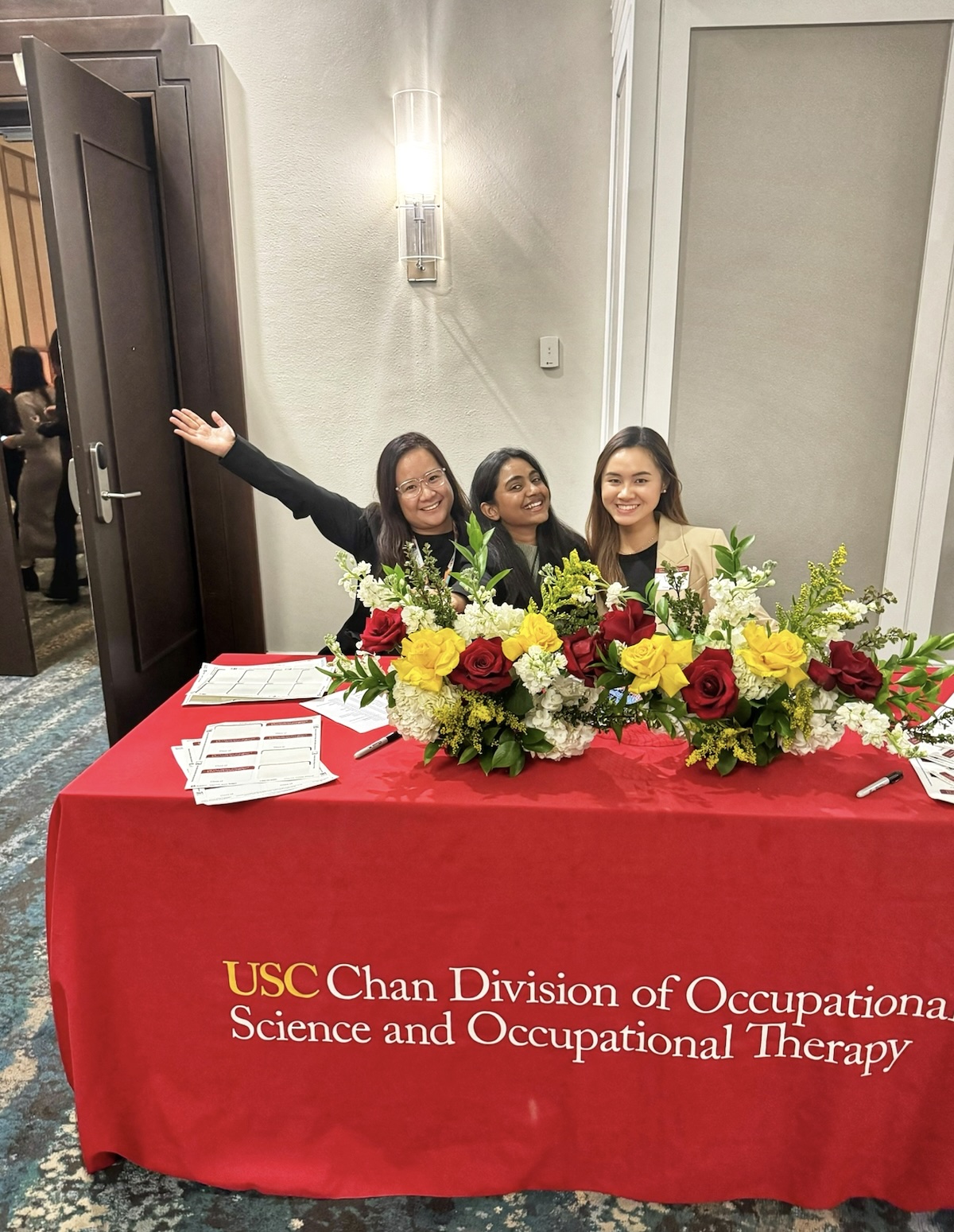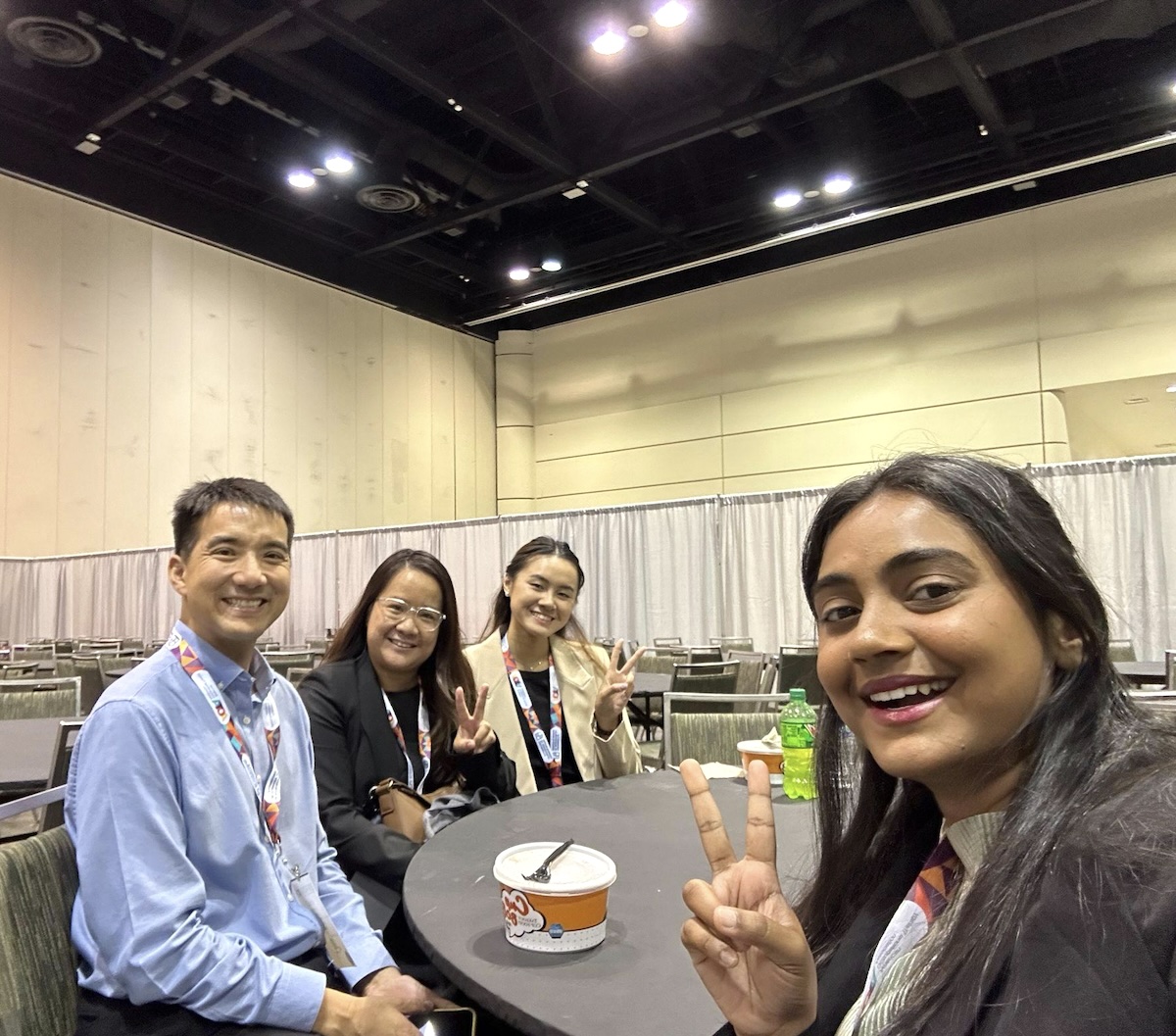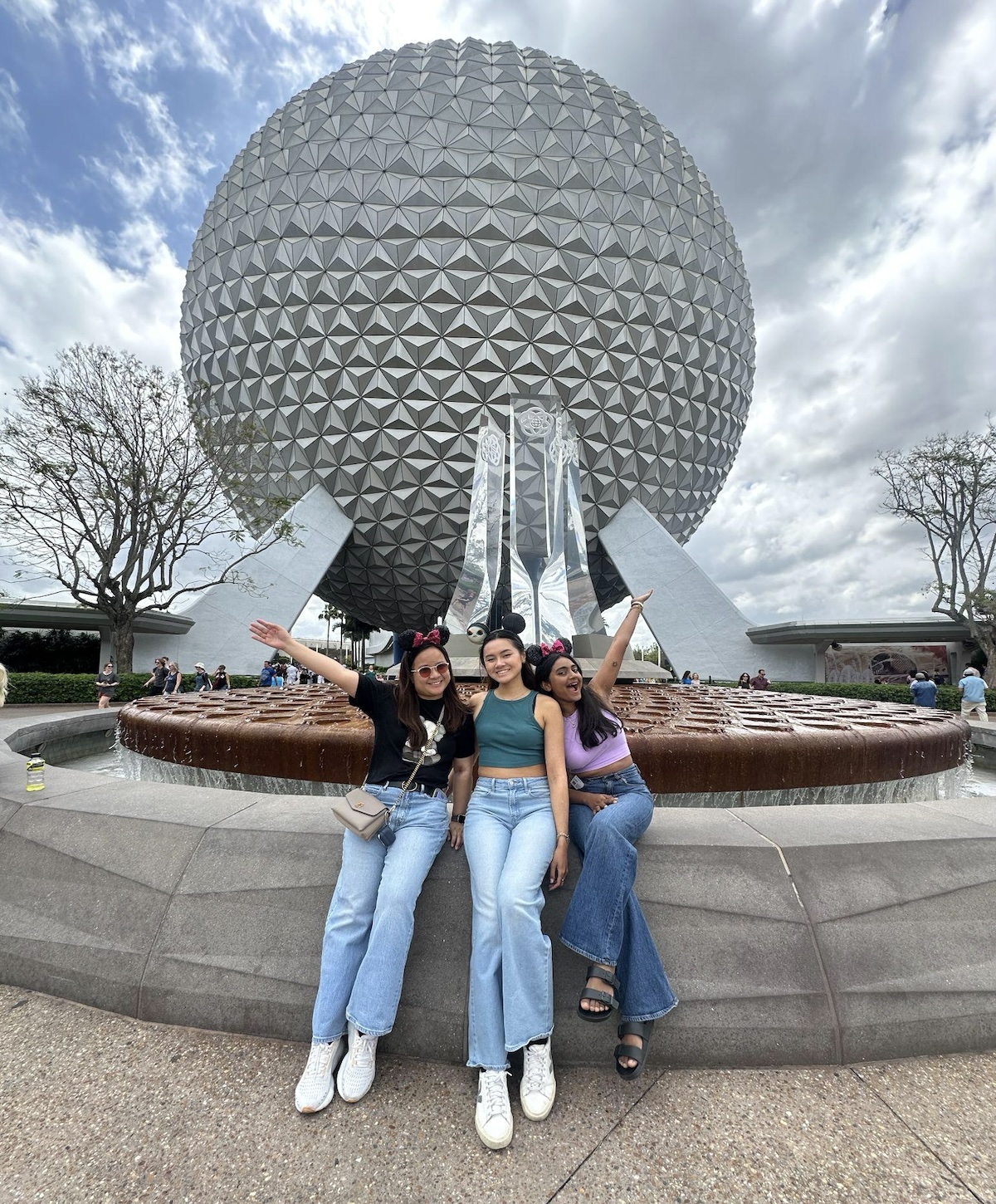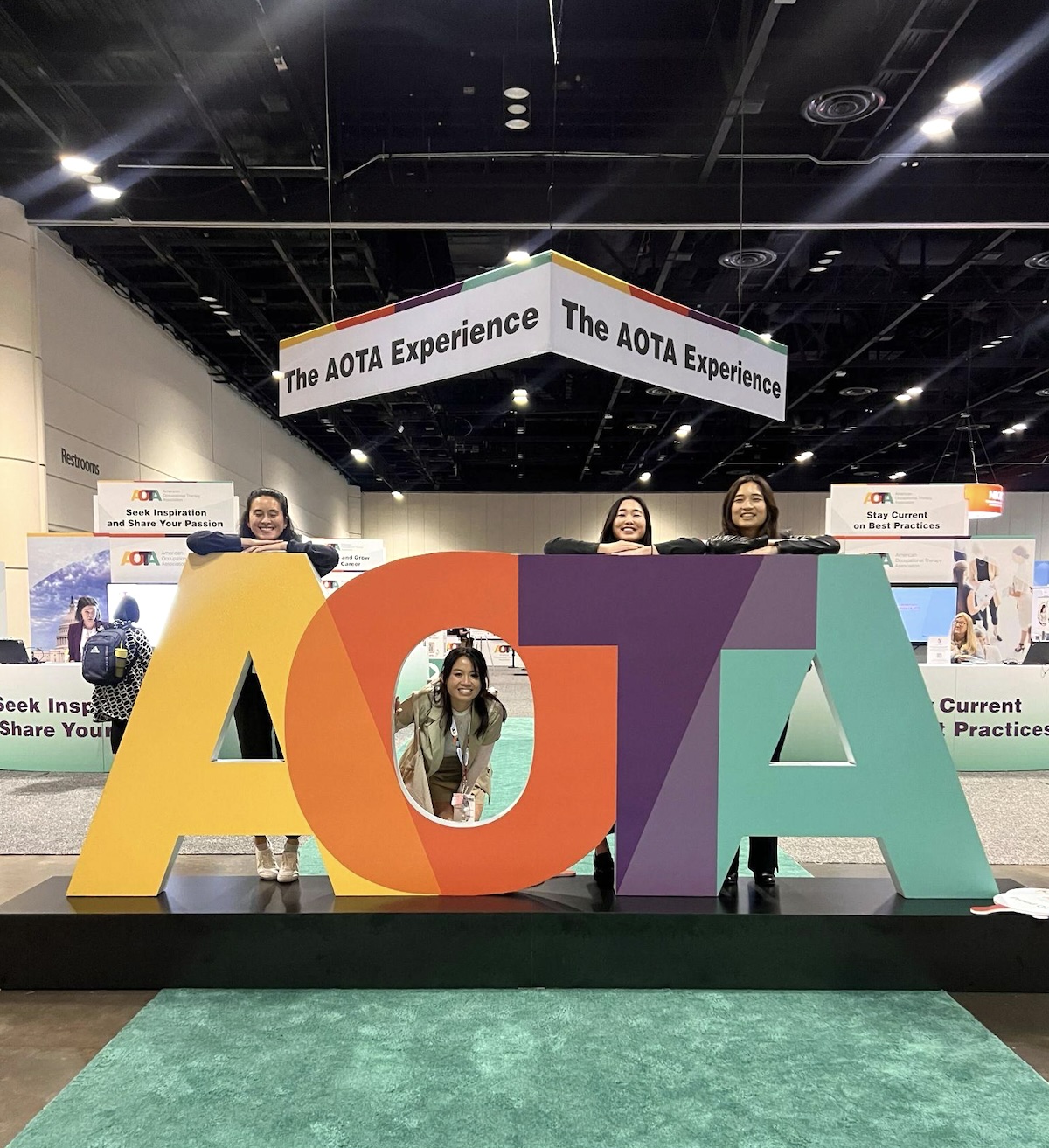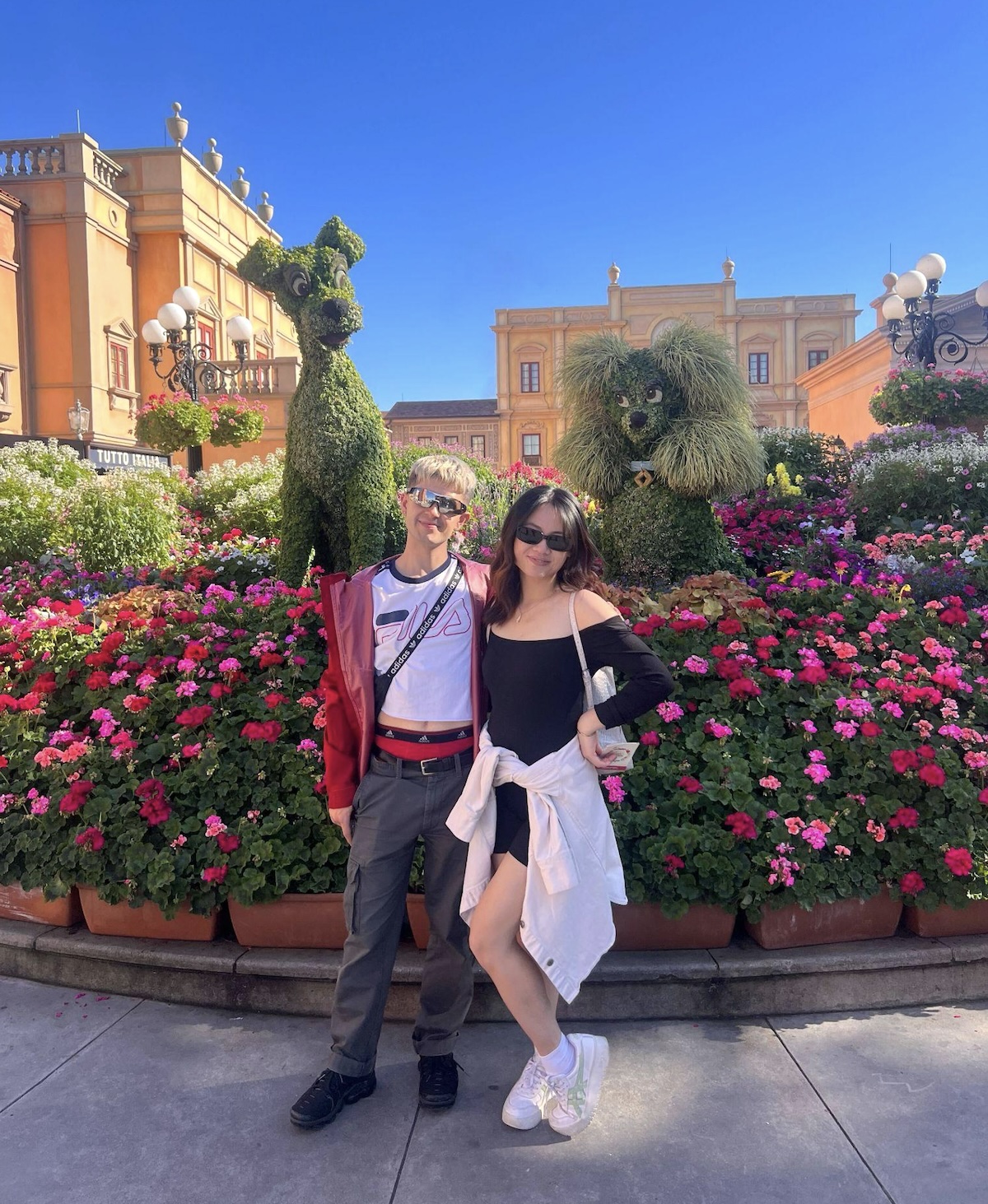Student Blog
Getting Involved
What I Learned in a Week as a Medical Volunteer in Panama ⟩
December 13, 2024, by Guest Author
Classes Community Diversity Getting Involved International
By Carly Martinez OTR/L, USC Chan Post-Professional OTD student

Carly Martinez OTR/L
When you read the name of the country Panama, what comes to mind? If you’re anything like me until about a month ago, your knowledge consists solely of the famed Panama Canal. After spending 8 days there as a medical volunteer, I won’t pretend to be an expert, but I can give you a brief glimpse into my journey.
During the first semester of my post-professional OTD, I decided I would take what I thought would be my final elective, MEDS 577, Global Palliative Care with Dr. Ben LaBrot. It felt significant for me as a practitioner because I had learned a little bit about hospice and palliative care through my master’s program at USC, and knew that occupational therapy (OT) had a role to play in that area. At the same time, it still felt like we had only skimmed the surface. Through that course, I learned a lot about autonomy and dignity, values my professional OT education had espoused, however, this was a deeper dive into this particular context.
A few weeks into the course, Dr. LaBrot shared that he would have to record class since he would be in Panama. After class the following week, some students stayed after class to ask the professor about another course he taught. While unintentionally eavesdropping, I learned that he was the founder of a medical volunteering organization, Floating Doctors, based out of Panama. Excited at the possibility of going abroad again as part of my OT education, I asked if his program accepted occupational therapists. He was enthusiastic about my participation and clearly an ally of occupational therapy through what he shared in the curriculum. It would count as my final elective, and I could get credit for volunteering through MEDS 554.
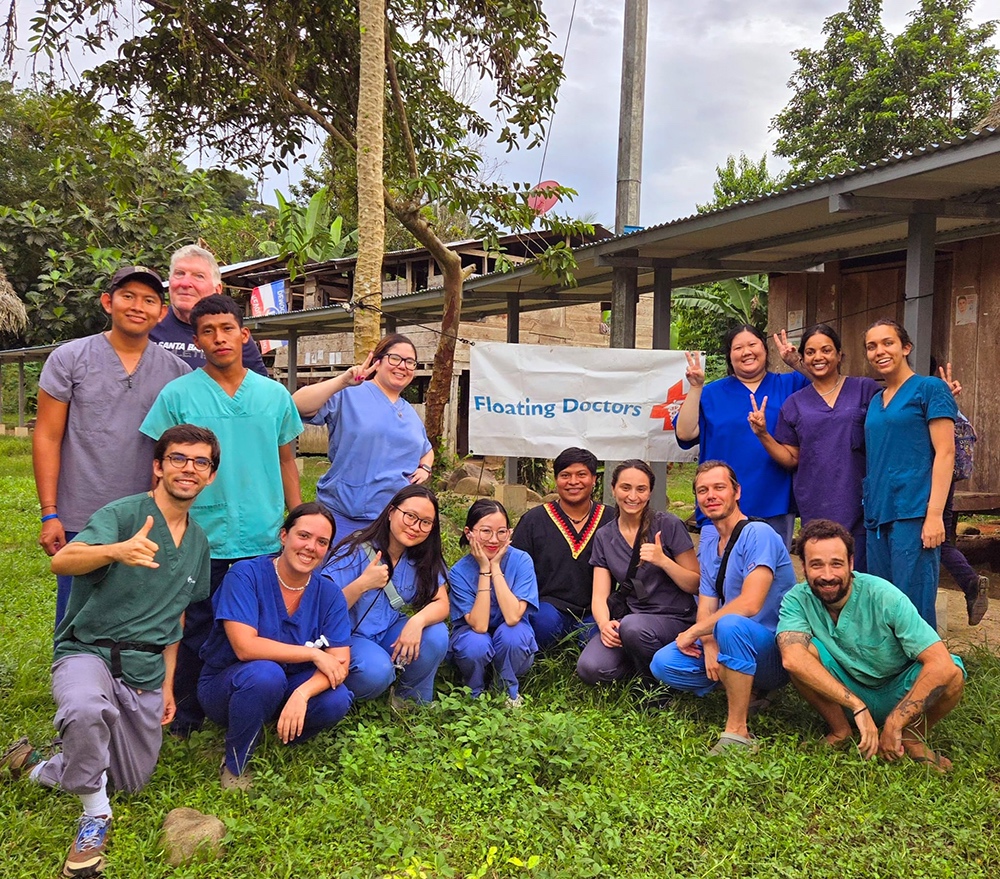
Volunteers for the week including physicians, a veterinarian, a dentist, medical students, and one OT.
Months later, I would find myself in a rainforest, translating for a classmate who graduated from medical school in Indonesia, learning how best to explain things to individuals who grew up in a completely different context than myself. Floating Doctors works with the members of the Ngäbe, an indigenous population in the Bocas Del Toro province of Panama. This region is designated as part of the Ngäbe-Buglé comarca, an officially recognized province that is part of how the nation is divided, similar to statehood, which allows for self-governance among the indigenous population. To get there, I flew from LAX to Panama City, then travelled to a second, smaller airport in Panama City to fly to Bocas del Toro, an island in the northern archipelago region of the country.
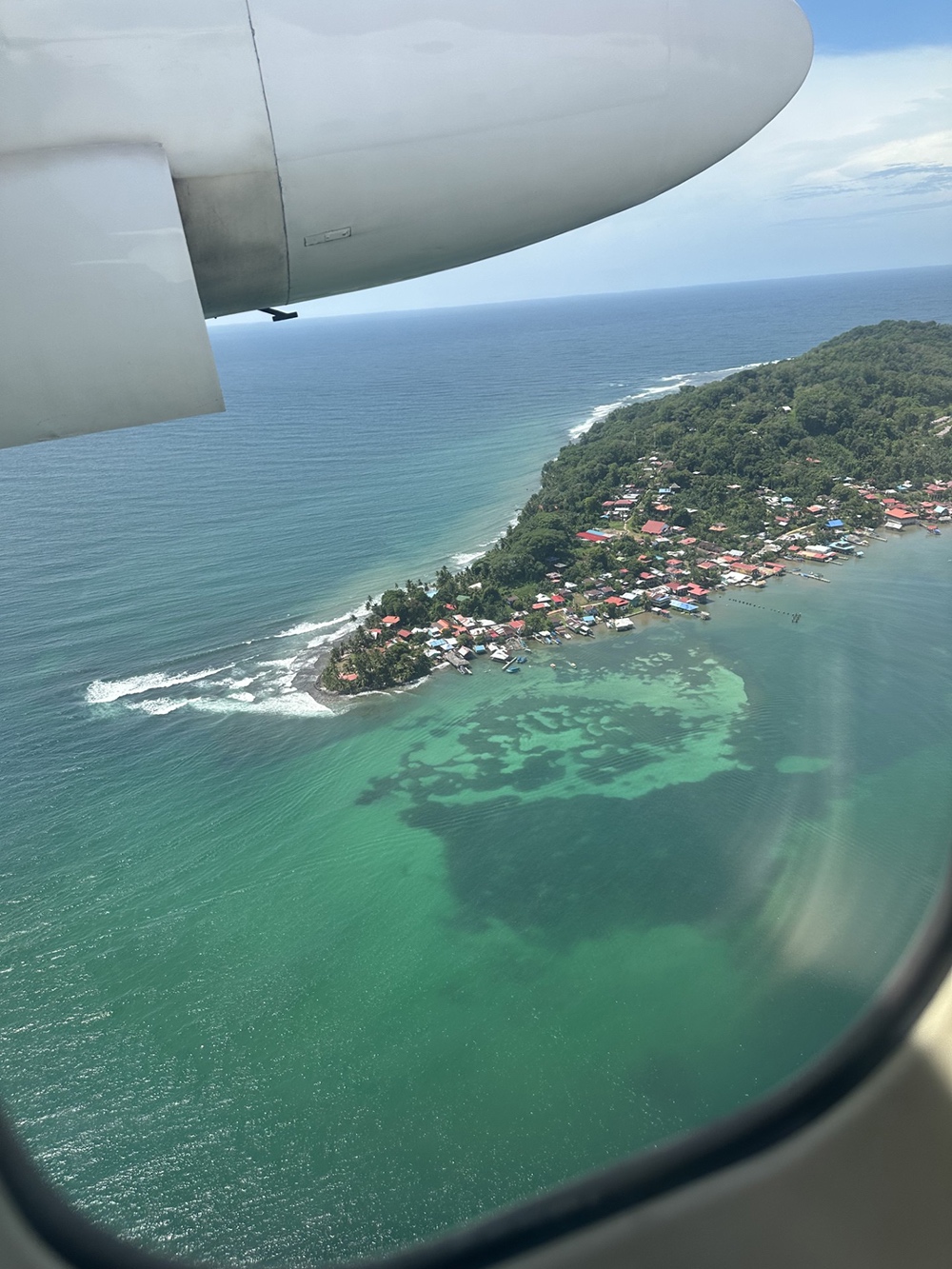
Preparing to land in Bocas del Toro
During clinic, we slept outdoors in the rancho where we provided services in hammocks strung from metal beams and bathed in the river, as do the community members. However, I will say that it was not the most rugged camping experience of my life. We had indoor plumbing, could purchase wifi from a nearby home, and had meals cooked for us by local women. Patients brought goods to sell, like the best chicken empanadas I’ve ever tasted, sizable chicken tamales wrapped in banana leaves, and artisanal breads. Some families told me they walked for a day through the mountainous terrain to be seen by the doctors. Did I mention that the weather hovered around 90 degrees and 100% humidity? The patients came well-dressed, with women in nice dresses and men in polos and jeans. I got the feeling they were dressed up to see us, but also because they would be seen by many other people who were also attending the clinic.
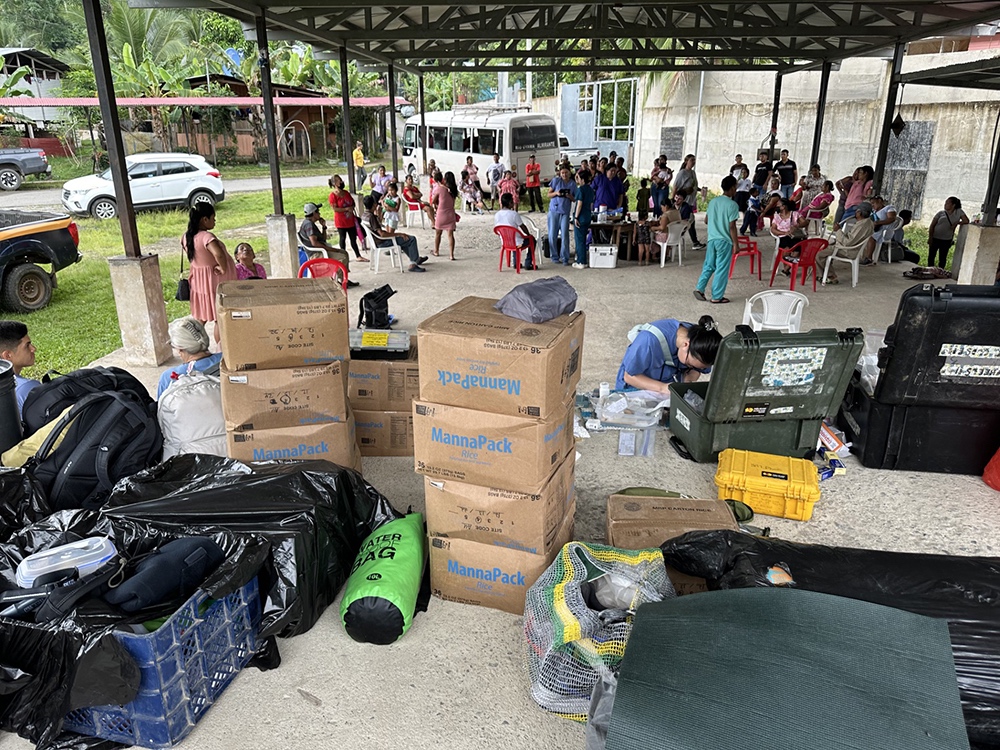
Preparing for a day of clinic. Folks were lined up before we arrived.
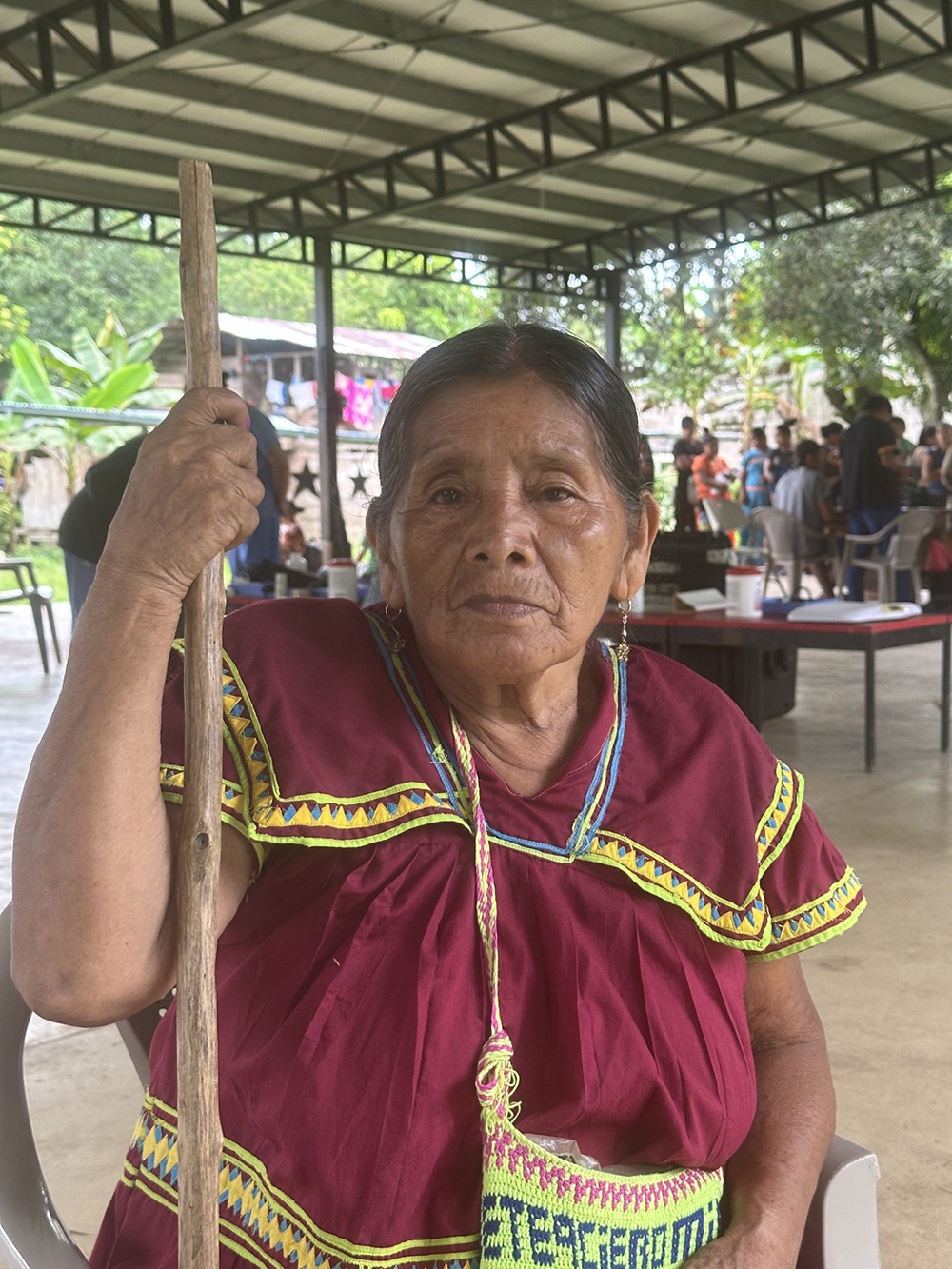
A visitor to the clinic wearing a traditionally-adorned dress (photo taken with permission).
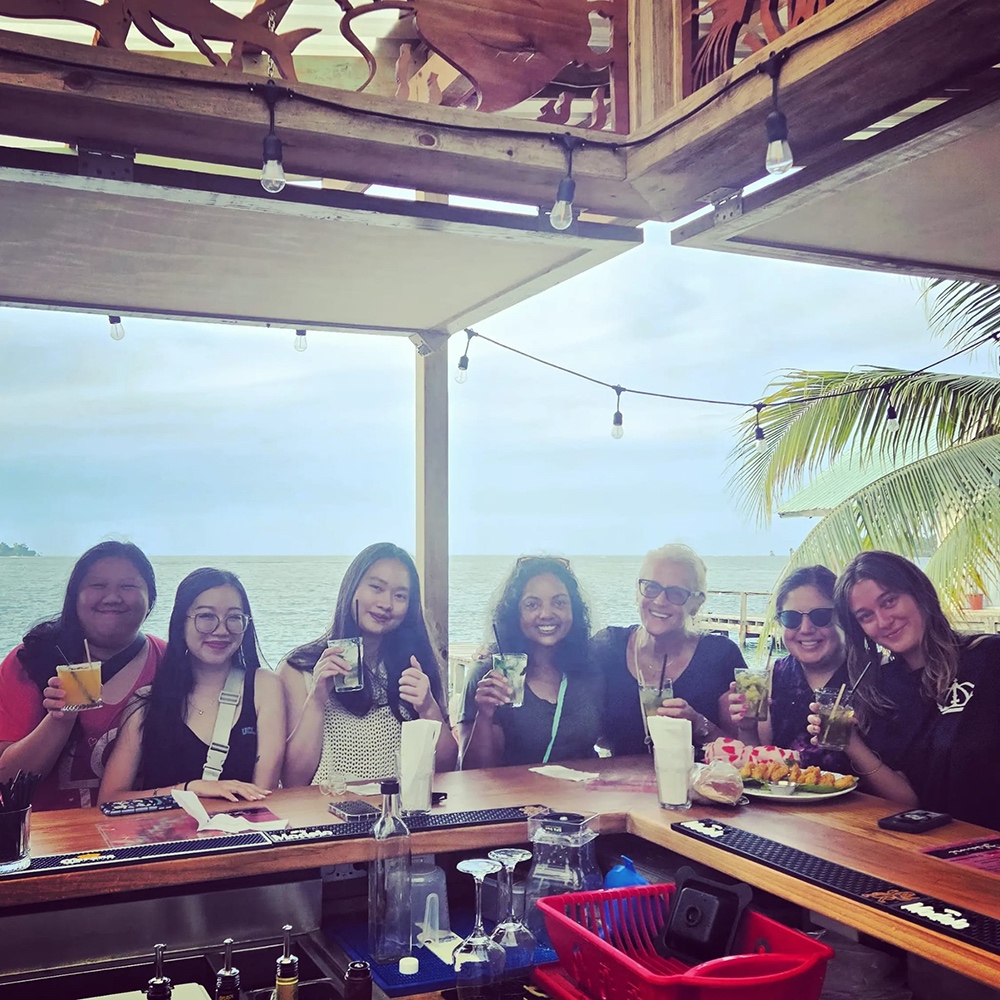
Enjoying refreshments (with ice!) with other volunteers in Bocas after a successful week of clinic.
Visitors to the clinic generally fall into two categories: fast lane or chronic. Fast lane is for new or relatively simple cases, such as needing paracetamol to manage fever, albendazole for concerns about parasites, or birth control injections. Chronic patients are seen every three months, as the team returns to each site regularly, cycling through the 28 sites they service. Though the providers change, there is still consistent care for diabetes, hypertension, and asthma, to name a few of the more common conditions. Patients can have their names put on a list for a doctor who comes by to perform cataract surgery as part of another program. Referrals can also be given in cases where a patient requires more or specialist care, such as the case of a 6-year-old girl who seemed to be struggling in school, based on her mother’s description. Though I did an informal writing assessment, she would need more testing to determine if she was reaching developmental milestones, something the organization is not equipped to offer at this time.
To be seen by specialist medical providers, they would need to go to a major town nearby. Although this community had a medical clinic nearby, the resources there were limited. Travel to David, a town with more medical resources, would require a bus ticket and potentially a stay in the city, a prohibitively expensive expenditure for some of the patients. Boquete is closer, though it is not as well-resourced and still requires a bus ticket to get through the mountains on rocky dirt roads, which do not have lights, limiting travel for safety reasons.
This trip felt challenging to my professional identity. As a new practitioner, I worry about the role OT can play in different contexts. The lead medical provider for the week was not familiar with OT, or Ergotherapy as it is often referred to in Europe. He told me that this does not exist in his home country of Russia. The World Federation of OT only credentialed the University of Panama’s OT program last year, in 2023. I wondered about the relevance of the profession to people whose activities of daily living (ADLs) likely consist of more life-sustaining occupations than mine do, such as gathering water or washing clothes by smacking them against rocks in the river, in addition to household management tasks like washing dishes and cleaning the house.
I could see the applications of OT for those who worked cutting bananas, as they suffer from repetitive motion injuries, for children in school, and likely, for individuals with mental health concerns, if I were to speculate. However, I also acknowledge that I don’t really know much about their everyday lives because I didn’t have the opportunity to get to know them in the ways that would be necessary for an OT evaluation. I longed to know more about what an average day is like, as this would allow me to begin imagining what role occupational science (OS) could play in trying to understand what life is like for the Ngäbe. If OS has taught me anything, it is that I am not an expert on the culture of the Ngäbe. In order to work with a population in a way that garners buy-in, one has to try to understand the values to support what is important to their patients.
All of this is not to paint a picture of an area with fewer resources; after all, there are rural areas of the US with limited access to hospitals or routine medical care. Instead, I hope that Panama provides opportunities for OT and OS to continue to develop in multiple contexts, ranging from the traditional academic experiences OT graduates may have in the larger metropolitan areas, to the volunteer OT services with Floating Doctors, as well as others yet to come.
For my final occupational therapy doctorate (OTD) project, I created a set of OT practice guidelines or a white paper, in support of the development of OT services for Floating Doctors. The hope is that this will allow for the expansion of OT services within the organization, encouraging more OT volunteers to attend, and familiarize the individual medical providers with the scope and potential interventions OT can provide. It will also be part of the information Floating Doctors provides the Panamanian government to continue its services there.
⋯
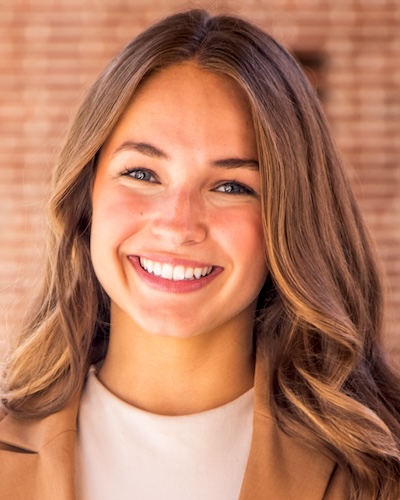
Day In the Life of an Undergraduate BS-OTD Student Vlog ⟩
December 10, 2024, by Avery
Classes Community Getting Involved Living in LA School/Life Balance Videos
Join me as I take you through what a typical day looks like as an undergraduate student in USC Chan’s accelerated Bachelor’s to Doctorate program in Occupational Therapy! One of the things I love most about this program is the balance it allows me to strike between my occupational therapy (OT) courses, engaging electives, general education classes, extracurriculars, and free time.
From participating in enriching clubs and student organizations to spending quality time with friends and exploring the vibrant city of Los Angeles, I’m able to enjoy a well-rounded college experience while still focusing on my OT studies.
As always, if you have any questions about the BS-OTD program from an undergraduate perspective, feel free to reach out!
⋯
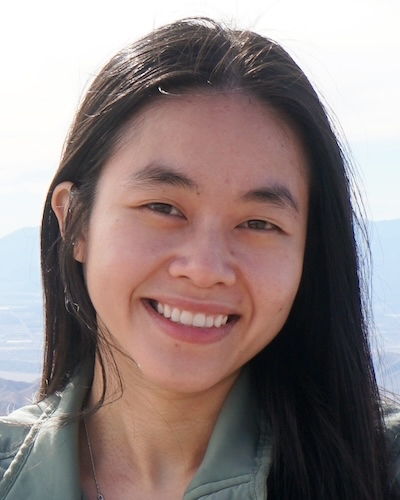
Get Your Money’s Worth! ⟩
July 22, 2024, by Dana
Getting Involved Life Hacks
After spending a GOOD amount for tuition, you should make your money worth it! Here’s my guide on what and how to claim free/discounted benefits at USC:
Lyft Rides Program: As USC students, we are provided with free Lyft rides after 5PM at the HSC campus (after 6PM for UPC) until 2AM seven days a week within specific boundaries of the area. This is so useful when you have late night food runs with friends or going home from studying at the library. After filling out a request form, the transportation team will email you an activation code, in which you will need to be signed in with your USC email on the Lyft app. After that, all your rides after 5PM will be free of charge! Here’s the website for more info: https://transnet.usc.edu/index.php/how-to-use-lyft/
LA Metro U-Pass: If you’re new to LA or don’t have access to a car, USC offers free public transportation around LA with the U-Pass! The U-Pass allows USC students unlimited rides on LA Metro’s rail and bus lines for any given semester using a tap card. The card can also be used around other LA cities such as Culver City, Norwalk, Torrance, Gardena, Long Beach, and Foothill. Because of this card, I went from my place in Monterey Park to the KIA Forum for a K-Pop concert without the stress of driving and parking fees. It is also great for exploring the city, such as taking the rails to Hollywood or Santa Monica Pier. You can purchase the card (free of charge) through the Transportation Purchase Portal, complete a Metro survey, and then the USC transportation survey. Once you’ve completed all the steps, you will be able to pick up your tap card at the transportation office and tap at any metro station for your next ride! Here’s the website for more in-depth info and steps: https://transnet.usc.edu/index.php/student-u-pass/
Discounts to Theme Parks and Zoos: USC offers various discounts to the following theme parks and zoos across SoCal: Six Flags Magic Mountain, Knott’s Berry Farm, Universal Studios Hollywood, Legoland, Aquarium of the Pacific, Los Angeles Zoo, San Diego Zoo. Some tickets can only be purchased online or in person at the USC Ticket Office on the University Park Campus at Galen Center or the One Stop at HSC on the Health Sciences Campus. I was able to use my USC email to get discounts for Universal Studios and the Aquarium of the Pacific, and it was much more enjoyable knowing that I didn’t pay full prices on those tickets. Here’s the website to check prices and activate your discounts: https://ticketoffice.usc.edu/for-the-usc-community/attractions-and-entertainment/theme-parks-and-zoos/
USC Visions and Voices: One of my biggest flexes while attending USC was that I got to watch Saweetie, Quavo, and the Migos perform LIVE over at the UPC campus. With USC Visions and Voices, they have events such as free concerts and performances throughout the school year for students to attend and enjoy. At the beginning of the school year, they host a huge event with performances to welcome students back from the summer and kick off the school year with fun activities! To keep up with their events, follow them on Instagram @uscvandv or watch out for updates in your email!
On-Campus Gyms: As part of USC Student Life, we have free membership to the gyms on the UPC (Lyon Recreation Center and USC Village Fitness Center) and HSC (HSC Fitness Center) campuses. As long as you are enrolled in at least 1 unit during the school year, you have access to any of the centers. When you enter any one of the centers for the first time, you can let them know you want to activate your membership and they will guide you through filling out a short form to access the gym. You only need to do that once and then can enter any of the centers through the swipe of your USC ID card.
Microsoft Office 365: If you’re more of a Microsoft person rather than Google Docs, you have access to all Microsoft apps when you sign into your USC account! I personally use Microsoft to organize all my files for classes and complete assignments through there. Go to the Microsoft website and sign in using your USC email, and then it will automatically redirect to the USC NetID login screen. Log in using your USC NetID username and password. And that’s it! You have exclusive access to Microsoft!
Subscriptions to LA and NY Times: USC offers a whole year of subscription to the LA and NY Times for USC graduate students! To claim the NY Times subscription you need to fill out a form (https://docs.google.com/forms/d/e/1FAIpQLSdrnNNe9ysQmLo0KW856zvcT-vNsAk2aR-aHP0oqrRS00xqXA/viewform) with your USC email and ID to get a code. For LA Times, you just need to sign up with your USC email after clicking the link in your MyUSC login (https://my.usc.edu/los-angeles-times/) .
Random Events on Campus! READ YOUR EMAILS! I can’t preface that enough because the amount of times my friends and I were able to get free food and goodies from the events around HSC/UPC were crazy! Some random events I went to were free food trucks on Election Day hosted by Graduate Student Government, destressing with therapy dogs on campus with complimentary donuts and coffee, free agua frescas and flower planting with Norris Medical Library, and so much more!! So please read all your emails as the student support team sends weekly emails about events around HSC, as well as in our division!
⋯
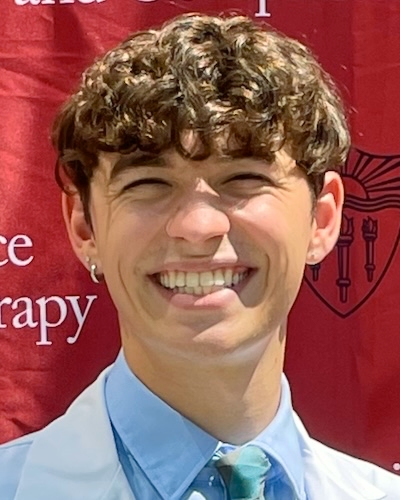
Working in College Is Not One Size Fits All ⟩
July 18, 2024, by Mason
Getting Involved Life Hacks School/Life Balance
Throughout my undergraduate and graduate education at USC, I have always had some form of job, and these were often funded by federal work-study. Federal Work Study is a government-funded student aid program that students may be eligible to receive depending on their financial situation as governed by the yearly FAFSA. The full ins and outs of the program can be a bit confusing, but to simplify it, if a student is awarded federal work-study, the government will give an employer money to pay your wage and to incentivize the hiring of you as a worker. In my personal experience, having federal work-study was extremely helpful as an undergraduate student, as many of the on-campus jobs such as working at the library, bookstore, etc. would be much more likely to hire a student with a federal work-study award. That is not to say that there are no jobs for those without this distinction. Many of my close friends and even myself during the years I did not receive this award were still able to find great employment opportunities and jobs that were flexible enough to accommodate a college student’s scheduling needs. The key takeaway from this though is that federal work-study can be a great opportunity and tool in finding employment during college, so make sure to remember to fill out your FAFSA accurately each year and not to overlook the award in your financial aid package.
Now on a more personal note, I’d love to talk about my experience so far as a working college student. I was fortunate to be raised in a very hard-working family, where both my parents worked full-time jobs while raising my two sisters and me. While my parents were working hard in their careers, my sisters and I were taken care of by my Nonno (grandfather). My Nonno immigrated to America from Sicily when he was just 19 years old and it is from him that I owe my work ethic across all of the jobs I have worked so far. No matter what was going on in my life, my Nonno always raised me to be a hard worker. He taught me that if you wanted something in life, that it was your responsibility to work hard to achieve it, and that any aspiration no matter how big was achievable with hard work & determination.
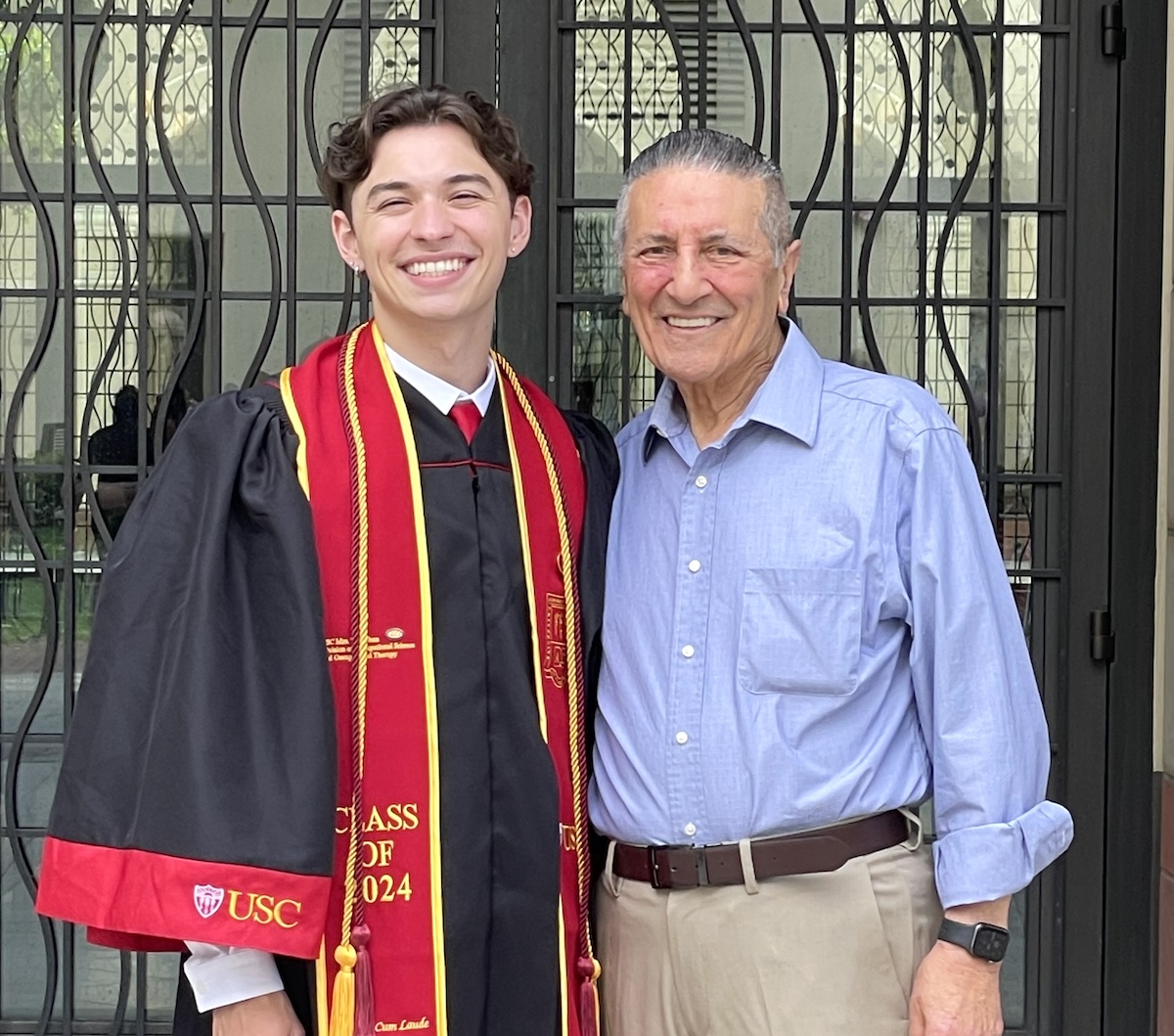
Mason & Nonno at USC graduation
I have worked many jobs in my life such as being a tutor, a beach lifeguard, a resident assistant, and a campus tour guide, and now I enjoy interacting with my community through blogs like this as a Chan student ambassador. For me, work has always brought me a sense of meaning and purpose. The idea of getting a job and working during college was never really a question in my mind, rather, it was more of an understanding I had made with myself to continue to work hard towards my goals. Students choose to work in college for a multitude of reasons, many work hard to pay for things like books, food, and rent. Some students choose to work so that they can have money to support themselves in meaningful activities like sports, exploring LA, or getting dinner with their friends. Finally, many students choose to work because having a job helps them derive meaning and purpose with their time in college. I have often found that people do not simply fall into one of these roles, rather, most students I know tackle every one of these goals simultaneously.
Working in college is not one size fits all. Each and every one of us is a different person, with different goals & aspirations, different finances, and importantly, different needs to succeed during our time here. So when considering whether or not to work during your academic pursuits the best advice I would give is to be honest with yourself and to think about what you need to succeed. Choosing not to work is just as meaningful as choosing to work if a job would jeopardize your success as a student. My advice, be open to trying new things! If a job doesn’t work out you can always stop and you can always try something else instead. Working in college is not perfect for everyone, but it can be a fantastic opportunity to set yourself up for financial, professional, and personal success in your future life and career.
That’s all for now, and remember to Fight On!
⋯
Igniting Passion, Building Bridges: AOTA Orlando Chronicles! PP-MA & First-year E-OTD Perspectives ⟩
April 12, 2024, by Global Initiatives Team
Getting Involved
By: Kathleen Jayne (PP-MA ’24), Wai Nga Vera Kwok (PP-MA ’24), Sanskruti Sonawane (PP-MA ’24), & Lydia Hong (E-OTD ’26)
Sanskruti: The AOTA conference was a dynamic hub of knowledge seekers, and I was thrilled to be there with my classmates Kath and Vera. We dove into sessions, starting with “Evidence-based strategies to assess and treat neuro-vision deficits in brain injury” by Dr. Sanchala Sen. This session broadened my understanding of the various other fields in OT. Post-session, I had a very insightful and wholesome conversation with Dr. Sen; it instilled in me a sense of pride and motivation after attending a wonderful lecture of a fellow Indian who has made a noteworthy contribution to the field of OT. Another highlight was the session on “Lymphedema and chronic edema in an inpatient acute care program” by Sarah Colwell and Amy Sommerville. Their engaging presentation sparked my interest in working with the lymphedema population. The expo hall was a bustling space where we explored different stalls and had a refreshing lunch. Later, I attended “Learning to administer the FUEL (Functional Upper Extremity Levels)” by Dr. Daniel Geller, an assistant professor at Columbia University. While this lecture explained the scale of FUEL, it also gave me a sense of understanding of what we do and why we do it.
Day two brought more enriching sessions, including “OT Intervention for Bladder and Bowel Dysfunction” and a fascinating lecture on blending technology and music for students with special needs, presented by Mary Hager. As someone involved in the Lifestyle Redesign Graduate Certificate program, “Promoting Sleep and Rest to Improve Outcomes & Quality of Life for Older Adults in Long Term Care” provided valuable insights and techniques for my practice. Learning about sleep pattern changes, conducting various sleep screens and assessments, and discovering new techniques for promoting sleep and rest will greatly enhance my ability to improve outcomes and quality of life for older adults.
Kath: AOTA Inspire offered a range of topics, but as I envision myself working in pediatric care, I focused on sessions related to this setting. It was tough deciding which ones to attend because they all seemed valuable. Two sessions stood out for me: Designing sensory-informed trauma responsive interventions in pediatric settings and Combining SI with other approaches like Executive Function, NDT and behavioral approach. Having previously worked in a US schools setting, I gained insights into group homes and foster care, which are not common in the Philippines, my home country. These sessions provided me with a deeper understanding of how to support my future clients effectively. The SI session was particularly engaging as well as it explored combining sensory integration with different therapeutic approaches. Overall, the conference was a fantastic learning experience, and I can’t wait to apply these insights in my practice.
Vera: Scrolling through the list of sessions during the AOTA conference, I had a hard time deciding which ones to attend as so many of them are useful and interesting. I ended up choosing topics that are more related to my current clinical placement at an outpatient pediatric clinic where I see children with sensory processing issues and traumatic past experiences. I attended some courses related to pediatric mental health and trauma-informed care. One of them was a course on sensory-informed, trauma-responsive tiered support. The speaker adopted the tiered approach and introduced interventions for children who experienced childhood trauma. It was eye-opening as it really looked into the child’s needs from a whole-person perspective. They suggested that OTs should advocate for our clients in the school system, but not only provide individual treatments. The environment that we create for the children should be inclusive so that every child should feel safe, and the children with special needs should be given opportunities to adapt according to their own needs. It provided me with a new perspective when looking at an inclusive environment for children with special needs. After attending the sessions of day 2, we went to the COTAD Happy Hour, where we met Dr. Janis Yue. We had an inspiring and fruitful discussion with her, especially about the topic of trauma-informed care, which is her specialty. As a student, seeing a young, outstanding scholar sharing her passion and specialty is so empowering. I am looking forward to connecting with her and learning more about her expertise! During the poster sessions, I enjoyed a presentation by Ying-Chia Kao, from Kaohsiung Medical University, on the topic of changes in sensory processing ability in adults post-COVID. It is interesting seeing international perspectives in the conference, as it encourages international collaboration in our profession!
We also volunteered with check-in during the Trojan Family Reception. This event provided us with the opportunity to connect and network not only with esteemed USC alumni who are experts in their field and fellow students from other cohorts but also with potential future employers post-graduation. It was fantastic witnessing everyone enjoying themselves that evening with an abundance of food, drinks, and dancing!
Lunch with Dr. Danny Park!
Wrapping up the conference, we added a touch of magic with a visit to Disney World’s Epcot, enjoying its culinary delights, thrilling rides, cultural themes, and breathtaking fireworks. The AOTA conference was not just a professional journey but a personal one filled with learning, connections, and unforgettable experiences. And the best thing is that we get to experience attending the conference for the first time with friends! While this was our first time attending the AOTA conference, it certainly won’t be our last. We’re excited for the next conference and we’re hoping that more of our friends will be able to attend.
Lydia: As a first-year student, I was a bit nervous about attending my first conference, but excitement quickly replaced my nerves. Our faculty and peers truly made my experience by inviting me to Epcot and showing me the conference ropes. Even in Florida, the Trojan family was everywhere, from running sessions, presenting posters, and breaking it down on the reception dance floor. My favorite sessions were Tech Lab 201: Use of Virtual Reality as a Clinical Tool for Anxiety in Students and Workshop 306: Mental Health Promotion in the School Setting: OT’s Distinct Value. I feel so lucky to enter the OT landscape as it evolves to enrich the discussion and research of mental health. My biggest takeaway was that the OT world is vast, and every practitioner’s unique interests drive our field. My heaviest takeaway was my check-on luggage full of goodies from the expo halls. As I left Orlando, I felt thrilled by the endless opportunities in our field. I can’t wait to apply the knowledge and skills I gained from AOTA to my classes and future practice. Fight on!
⋯





